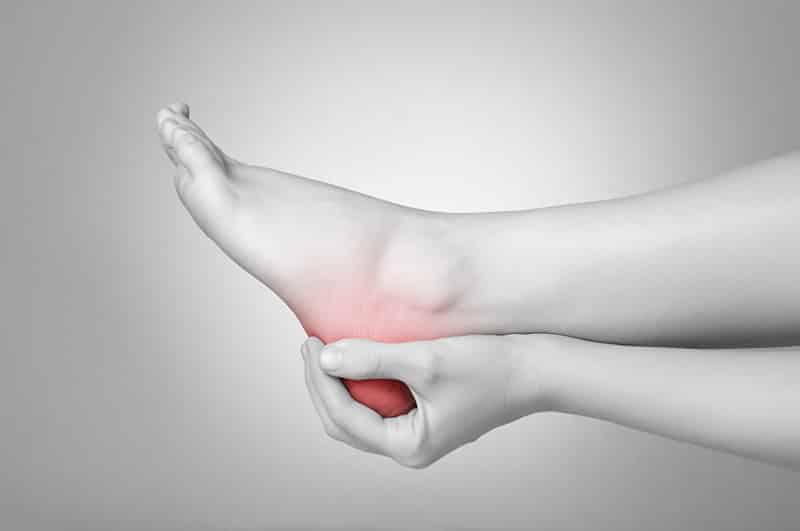
Plantar fasciitis: Treatment and self-treatment
What is the normal treatment for plantar fasciitis? And what kind of treatment has the best documented effect against plantar fasciitis? Read more about different types of plantar fasciitis treatment here in this article. We also review the best self-measures that can contribute to a faster healing and improvement of the damage.
Main article: - Complete overview of plantar fasciitis
Treatment of plantar fascitis
We divide conservative treatment of plantar fascit into four categories:
- Muscular treatment
- Joint Treatment
- Shockwave Therapy
- Exercises and training
The two best documented forms of treatment for plantar fasciitis are pressure wave therapy and joint therapy - these can in turn be combined with muscular work and instruction in home exercises / stretching exercises for the best possible effect.
Muscular treatment
In plantar fasciitis, the muscles of the foot and calf are often very tight. Muscle work consisting of muscle knot treatment (trigger point treatment), massage and light stretching can help to release muscle tension in the foot and leg - both of which can contribute to the dysfunction of the tendon plate under the foot (plantar fascia). Muscular treatment can also consist of acupuncture / intramuscular acupuncture.
Joint Treatment
Several studies have shown that joint mobilization and joint correction techniques (performed by authorized health professionals) can lead to more proper functioning in the affected areas. In the case of plantar fascitis, this is especially true in the ankle joint and the associated smaller joints in the foot. By getting more normal movement in these, there will be less error loading and thus a higher chance of a faster healing.
Shockwave Therapy
A large meta-study (Aqil et al, 2013) concluded with what has long been known:
"Pressure wave therapy is effective against long-term / chronic plantar fasciitis"
We remind you that a meta-study is the strongest research study that exists. But what it says is that it can - in complicated cases - take slightly more treatments than most therapists might think. Here, one must take into account factors such as duration, previous nerve damage (eg diabetic neuropathy), body weight and strength in nearby muscles in order to be able to give an estimate of how many treatments it will take. However, a heavy person who has had plantar fasciitis for a long time must therefore settle for a larger course of treatment (perhaps up to 12 treatments) before they can expect greater improvement. Normally, however, many will experience improvement during 5 treatments - but as I said, this varies from person to person.
Furthermore, pressure wave therapy - in terms of how it works physiologically - always works to a certain degree. The only question is whether the person has had too few treatments or whether they continue to ruin for themselves with poor footwear and too much strain (eg due to obesity)?
You can read in more detail about pressure wave therapy here .
In general about self-measures and self-treatment
Plantar fasciitis is not as complicated as so many people want it to be. The plantar fascia has a certain load-bearing capacity - and if you exceed this over time, damage will occur. It's that simple.
One can contribute to improved foot posture (eg by supporting the crooked big toe) with hallux valgus support -which can make sure you walk more correctly on the foot. Another measure most people use is plantar fasciitis compression socks for increased blood circulation and faster healing of damaged tendon fibers. Those who are more severely affected should take advantage night shine.
Here you see one plantar fasciitis compression sock (click here to read more about it) which is specially designed to provide increased healing and improved blood circulation directly towards the actual damage in the tendon plate under the foot blade.
Read on:
I main article about plantar fascitis you can read in-depth information on all categories that include this theme.
NEXT PAGE: - PLANTS FASCITT (click here to go to the next page)
Keywords (8 pieces): Plantar fascitis, Plantar fasciitis, plantar fasciosis, plantar tendinosis, clinical examination, diagnosis, diagnosis, how to diagnose plantar fascitis



